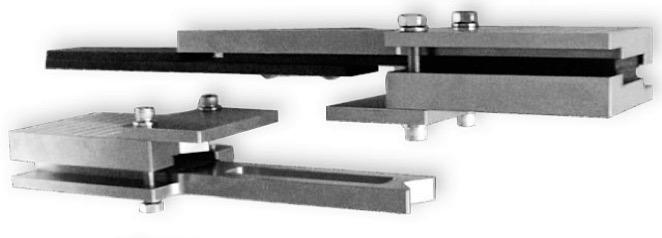The bearing strength of a 1.5” wide test specimen assembly containing one or two ¼” diameter fasteners is to be determined.
The test sample for procedure B is composed of two identical plates secured together using one or two fixing elements of the central line, with a doubler on each end to minimize bending due to eccentricity of the applied force.
This support device can be used both with tensile or compressive load, to stabilize the unit and further reduce bending effects.

Sources of Additional Information:
- ASTM Standard E 399-12e3, “Plane-Strain Fracture Toughness of Metallic Materials,” American Society for Testing and Materials, West Conshohocken, Pennsylvania (first issued in 1970).
- ASTM Standard D 5045-99 (2007e1), “Plane-Strain Fracture Toughness and Strain Energy Release Rate of Plastic Materials,” American Society for Testing and Materials, West Conshohocken, Pennsylvania (first issued in 1990).
- ASTM Standard E 1922-04 (2010)e1, “Translaminar Fracture Toughness of Laminated Polymer Matrix Composite Materials,” American Society for Testing and Materials, West Conshohocken, Pennsylvania (first issued in 1997).
- ASTM Standard E 1290-08e1, “Crack-Tip Opening Displacement (CTOD) Fracture Toughness Measurement,” American Society for Testing and Materials, West Conshohocken, Pennsylvania (first issued in 1989).
- ASTM Standard E 1820-13, “Measurement of Fracture Toughness,” American Society for Testing and Materials, West Conshohocken, Pennsylvania (first issued in 1996).
- ASTM Standard E 647-13ae1, “Measurement of Fatigue Crack Growth Rates,” American Society for Testing and Materials, West Conshohocken, Pennsylvania (first issued in 1978).


